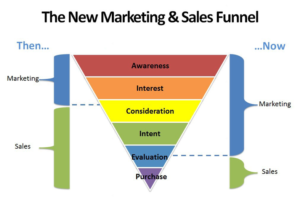Let’s face it. Marketing is hard.
Great marketing takes time, focus, dedication, money, and a cohesive strategy. You have to know your audience insanely well and have the right team in place that can execute, move quickly, and think creatively.
To complicate the process even more, great marketing doesn’t have a specific, one-size-fits-all formula. It’s subjective. What works for the boutique coffee shop down the street won’t necessarily work for the bank in midtown. Even within your audience, there is subjectivity. One individual may love the message of your latest advertisement and be inspired to take action, while another just doesn’t get it.
With so many variables effecting your marketing strategy, it can be easy to make mistakes. The beauty of marketing is that it’s always a work in progress. Experimentation and learning is the name of the game.
Let’s take a look at some overarching small business marketing mistakes made on a regular basis.
- Marketing is not advertising
Let’s get this out of the way first. Marketing is way more than just advertising. Marketing is everything you do as a business. Here’s an easy rule of thumb to follow: if a decision impacts your customer, product, brand, or company culture, it’s a marketing decision. Thus, don’t make the mistake of excluding your marketing team; ensure they are well-positioned throughout the company and have an impact on all facets of the business.
- Advertising without the advertisement
Advertising is an expensive strategy. Whether you are placing a print ad in a magazine, running a digital campaign, or finally getting that billboard on I-285, paid media takes a significant chunk of change out of your marketing budget. With so much money at stake, I’m constantly amazed by how little thought and creativity goes into the actual advertisement. Time-and-time again I see businesses use the same boring stock photos, unimaginative marketing copy, and lackluster strategy.
Here are some things to think about when developing your next advertisement:
- Does this look like every other advertisement I’ve seen today?
- Does this cut through the clutter or add to the noise?
- Would this advertisement inspire me to take the intended action?
- What is the intended action?
- Are my product offering, competitive advantage and call to action clearly stated?
- Is my logo placed prominently?
- Is the design and copy clean and easy to read, or is it information overload?
- Is the advertisement consistent with other aspects of my marketing mix e.g. website, social media channels, etc.?
- The marketing and sales funnel
The marketing and sales funnel has shifted dramatically over the past two decades. The graphic below sums it up perfectly.
In the past, marketers were primarily responsible for driving the audience into the funnel and creating awareness. From there, it was up to sales to nurture the lead, provide information, and close the deal.
Today, the marketing and sales funnel looks much different. Because buyers have much more information at their fingertips and people (especially younger audiences) generally don’t like speaking to other individuals during the discovery and buying process, marketing is much more influential in steering the buyer’s journey and converting prospects into customers.
The mistake many small businesses make is not re-balancing the organizational structure of their marketing and sales team to conform with this new normal. Given that marketing is everything that you do (see mistake #1), the marketing team needs more resources to operate effectively.
- Marketing intelligence
At the end of the day, the effectiveness of your marketing can be boiled down to how well you know your audience. Marketers that know their audience inside and out find it a lot easier to sell products and services than marketers that don’t fully understand the buyer’s persona. Think of it this way, “It’s way easier to shop for your best friend than it is the cousin you haven’t seen in five years.”
With technology advancing so quickly, marketers are living in a dream world. There is more information, data and market intelligence than ever before. The problem is that many small businesses haven’t caught up to this new world. Rather than focusing on collecting information on their audience, optimizing conversion strategies, and using technology as the backbone of their marketing program, they’re stuck doing the same thing they’ve done for years. And that’s the mistake.
- Tracking vs. doing
Most small businesses do a fairly decent job of tracking marketing strategies, tactics and activities. They actively monitor their Google Analytics account, track leads through a CRM system, and can tell you about the ROI of a given campaign.
What small businesses are doing with this information is less clear. The mistake I often see is that small businesses and marketers are tracking good marketing data, but don’t know what to do with it.
Your website gets 10,000 average monthly visitors. But is that good? Why is traffic up, down or stagnant? Are your competitors driving more or less traffic? Is this traffic sufficient to meet revenue goals? If not, what do you do?
Unless you are finding answers to these types of questions and successfully leveraging the data, you just have numbers. To be successful, small businesses must challenge their marketing teams to do more than just track.

